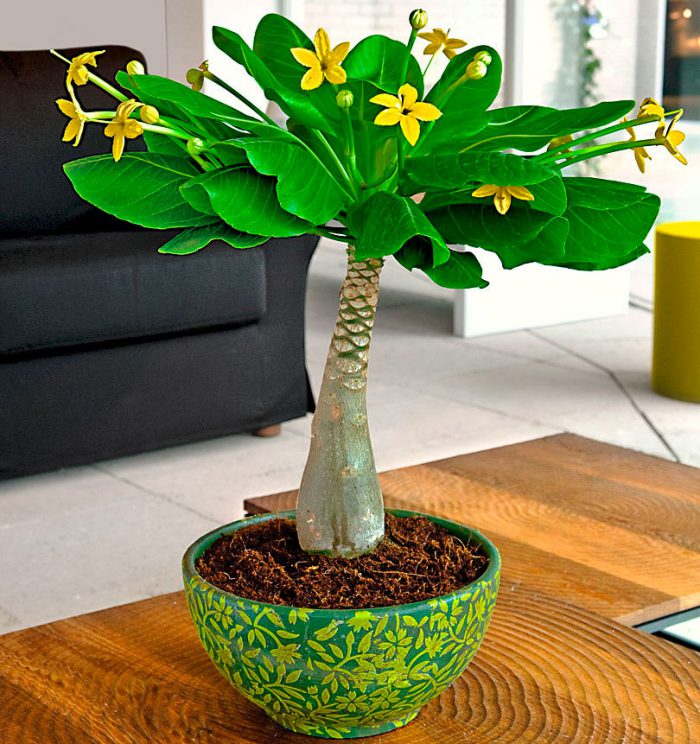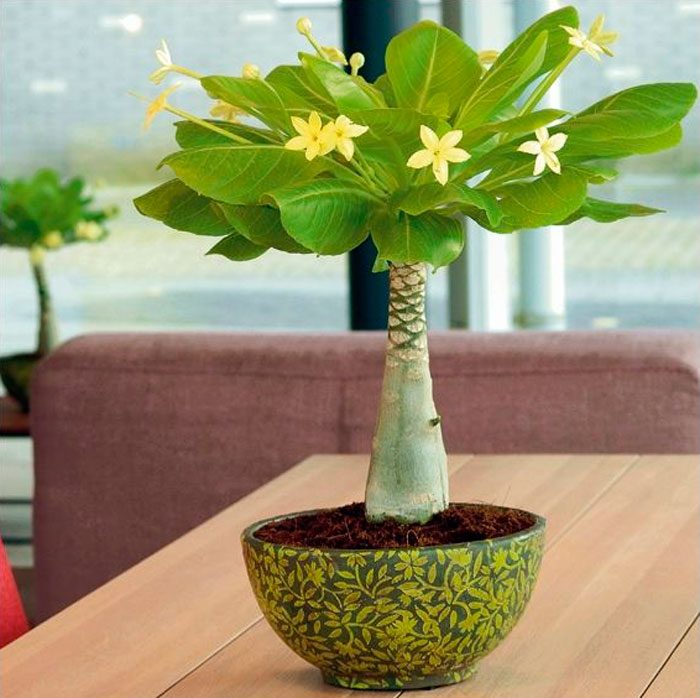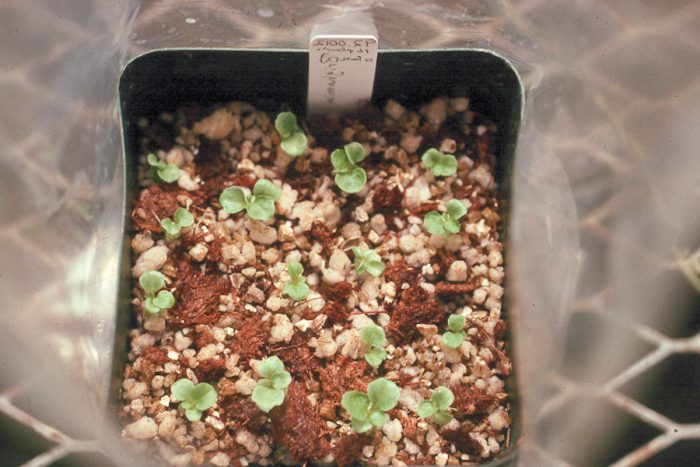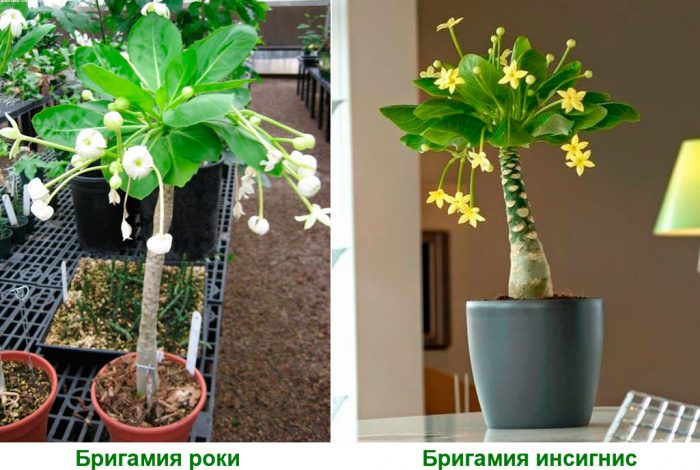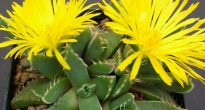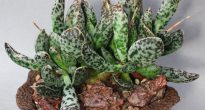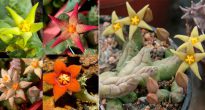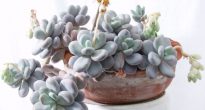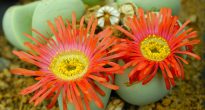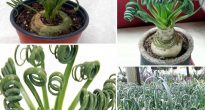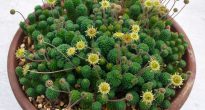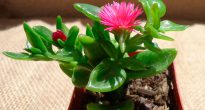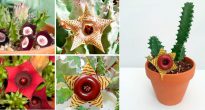Such a succulent as brigamia (Brighamia) is directly related to the campanulaceae family. This plant is also called "Hawaiian palm", as it has external similarities with a palm tree, and it is also called "cabbage on a leg", "volcano palm".
Brigamia has existed on planet Earth for more than a million years, but flower growers have recently paid attention to it. The ancestors of this plant preferred to grow on the volcanic steep cliffs of the Hawaiian Islands, and they gradually changed their appearance. There was a gradual increase in the size of flowers (up to 15 centimeters) and they became more and more powerful. At the same time, insects lived on Earth, which had rather long proboscis. It was these insects that pollinated the tubular flower of this succulent. When the first people began to live on the Hawaiian Islands, the nature there changed significantly. So, in particular, the very insects that pollinated the brigamia disappeared, because of which the latter was threatened with extinction. The fact is that without pollination, fruits and seeds on this plant ceased to appear. And in the absence of seeds, young plants also disappeared. A couple of decades ago, this plant was on the verge of extinction. However, they were able to survive, and all thanks to scientists working in the Hawaiian National Tropical Park (National Tropical Botanical Garden NTBG). They were the first to start activities aimed at saving endangered flora representatives. It was decided to carry out manual pollination of the brigamia, which was dared by a couple of brave scientists who had previously been mountaineering. They have to pollinate at an altitude of more than 1,000 meters above sea level. Thanks to these scientists, people can still admire brigamia and receive seeds from it. They also became the initiators of the program, which is aimed at saving this species of flora.
In the nineties of the last century, the seeds of this plant ended up in the research greenhouse of the Dutch company "Plant Planet". They are engaged in the cultivation of not quite ordinary domestic plants. It is there that now the brigamy is grown and sectioned, with which anyone can decorate their apartment today.
The unusual bottle-shaped stem of such a succulent is very fleshy, and quite a lot of moisture can accumulate in it. Thanks to this, the plant is able to survive a rather long dry period. At the top of the stem are shiny leaf plates collected in rosettes. The length of these pale green leaves can be no more than 30 centimeters. There is a layer of wax on their surface, and outwardly they are similar to cabbage leaves.The leaves on the bottom may turn yellow and fall off during the growth process. In the place where they were attached to the stem, a whitish milky sap is released, which does not pose any harm. Under natural conditions, this succulent can reach a height of 3 meters, and in indoor conditions, its height almost never exceeds 100 centimeters. The trunk of a young specimen is green and smooth, as it grows, its color turns gray, and scars form on the surface (traces of dead leaf plates). Pale yellow flowers, consisting of 5 petals, arranged in groups of 3-8 pcs. The corolla has a diameter of 1 to 3 centimeters, the length of the tube varies from 7 to 14 centimeters.
Flowers appear directly on the surface of a bare, rather dense greenish-brown or ash-silver stem, which has a thickening below, and the surface can be either smooth or scarred. Vanilla-scented flowers bloom in September – October.
Content
Home care for brigamia
Illumination
In winter, to place this plant, you must choose a south-facing window, since it needs a lot of light. With the onset of spring, brigamy is taught to direct rays of the sun gradually, and that's all, because because of the thin bark on the surface of the stem, a sunburn can form. In the summer, the plant has a dormant period. At this time, it needs to be shaded from the direct rays of the sun, and if this is not done, then the plant can drop all the leaves. Most flower growers advise placing the brigamia in the garden or on the balcony for the summer period, while it is worth remembering that in the fresh air this succulent tolerates the direct rays of the sun better. In the first days of autumn, the flower is brought back into the room, where it soon blooms. And you can admire its unusual flowers until November.
Temperature regime
Such a plant loves warmth very much. In the warm season, it is recommended to grow it at a temperature of at least 25-27 degrees. In winter, make sure that the temperature in the room does not drop below 15 degrees. Reacts extremely negatively to root hypothermia.
Humidity
High humidity is required, which should be about 65–75 percent. To increase moisture, it is recommended to moisten the plant every day with the smallest sprayer.
How to water
A decent amount of liquid can accumulate in the trunk of the brigamia, and therefore it can survive fairly long dry periods. It is noticed that without watering such a plant can do up to 1.5 months. Watering should be done in moderation and only after the earthen lump is completely dry. So, in the summer, watering is done approximately once a week, and in the winter - once every 4 weeks. If the plant is watered too abundantly, then its root system can rot. For irrigation, use lukewarm water (higher than the air temperature by 2-4 degrees).
Top dressing
The plant is fed in the spring-summer period once every 4 weeks. For this, fertilizer for cacti is used, which must be dissolved in water intended for irrigation.
Earth mix
Suitable soil must be permeable and well-drained, otherwise rot may develop on the root system. To prepare the soil mixture, you should combine the sand with purchased soil for cacti, which must be taken in equal parts. The substrate should be slightly acidic (5.0 to 6.0) or neutral (0.6 to 0.7).
Transplant features
It is recommended to transplant in the spring.Young specimens are transplanted once a year, and adults - once every 2 or 3 years. Suitable pots should be wide and low. So, bonsai bowls are well suited, at the bottom of which there are holes for drainage. And all because this succulent plant has superficial roots that are located at a depth of 10 to 20 centimeters. Do not forget to make a good drainage layer of expanded clay at the bottom of the container, the thickness of which should be 3–5 centimeters.
Reproduction methods
You can propagate by seeds, but for this you need to manually pollinate the flowers. Can be propagated by cuttings. In this case, the cuttings themselves are taken from the upper part of the stem, and they grow there when it is damaged. The stalk is left for 2 days in the open air to dry. After that, it is placed in a greenhouse on sand, which must be dry and clean. Do not forget to ventilate the mini-greenhouse every day, as well as moisten the cutting with lukewarm water from a small sprayer.
Pests and diseases
Often settles on foliage spider mite... Can also settle whitefly or aphid.
Secrets of growing brigamia
For the successful cultivation of this succulent, you should read a few tips from experienced florists.
- When buds are formed on the plant, as well as during the flowering period, it cannot be rotated relative to the light source. Otherwise, all the buds may fall off. For normal development in autumn and winter, it is recommended to supplement brigamia, while daylight hours should be about 12 hours. So, in order to get the required length of daylight hours, you need to turn on special lamps 2 hours before dawn, as well as in the evening.
- The plant can shed all the foliage due to stress. So, stress can cause a change in the intensity of lighting, a transition from winter to summer, the presence of a large amount of moisture, an increase in the likelihood of pests, moving a flower from a store to an apartment. In doing so, the plant sheds foliage in self-defense. However, after it has acclimatized, new leaves grow on it quite quickly.
- If the upper part of the stem is damaged, the buds located on it may wake up, which makes the "crown" more lush.
- A warm shower, once every 4 weeks, has a beneficial effect on the plant, but the water should not be hot. You can also arrange a "sauna" brigamia, if possible. To do this, place the succulent in a shower stall filled with steam for 5–6 hours (do not turn off the light).
Main types
There are 2 types of such a plant: brigamia rocky (Brighamia rockii) and brigamia insignis (Brighamia insignis). They are very similar in appearance. They differ in stems, so in the brigamia roca it is more swollen at the base and gradually tapers towards the top. Even in the brigamia insignis flowers can have a whitish-yellow or white color, and in the brigamia rocky - mostly only yellow. However, on this basis it is not possible to accurately determine the type of plant, because one copy may contain white and yellow flowers. As a rule, the corolla contains 5 petals, but at the same time there are flowers with 6 or 7 petals, and in both species. The fruits are two-chambered dry polysperms, which can be 1.5 to 2 centimeters long and 1 to 1.5 centimeters wide. A ripe fruit cracks in 2 seed grooves, after which the seeds contained in it spill out. Small oval seeds are only 0.1 centimeters long. The two types of such plants also differ in seeds. So, in the brigamia roca, the seeds are smooth, and in the brigamia insignis, small tubercles are located on their surface, and therefore they are rough to the touch.

